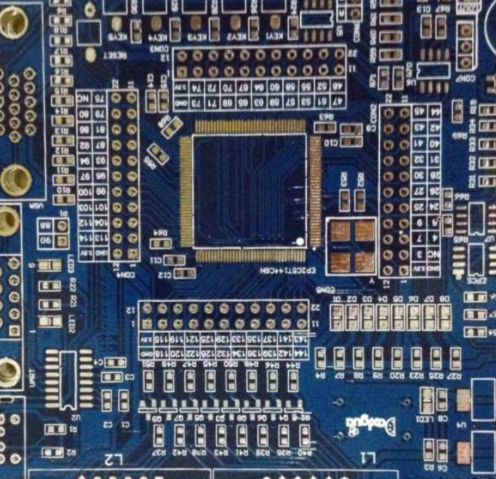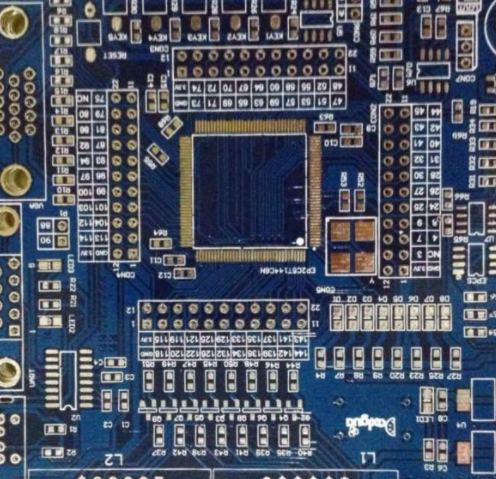
Several Technologies for Improving PCB Lamination Quality
With the rapid development of electronic technology, the development of printed circuit board technology has been promoted Printed circuit board (PCB) is a kind of multilayer PCB which is increased year by year through single side, double side, and one layer Performance printed circuit board (EPCB) is developing towards high precision, high density and high precision Lamination is the manufacturing of multilayer printed circuit boards The control of lamination quality is becoming more and more important in the manufacturing process Therefore, to ensure that the printed circuit board has multiple layers of printed circuit board s, we can well understand that the printed circuit board requires multiple layers of printed circuit board s Therefore, based on years of laminating practice, the following summarizes how to improve the laminating quality of composite materials PCB multilayer PCB:
1、 The inner core PCB meeting the lamination requirements is designed.

Due to the gradual development of laminating technology, from the previous non vacuum hot press to the current vacuum hot press, the hot pressing process is located in a closed system and cannot be seen or touched. In this regard, it is necessary to reasonably design the internal printed circuit board before laminating, and here provide some reference requirements:
1. Select the thickness of the core PCB according to the requirements of the total thickness of the multilayer PCB. The thickness of the core PCB is the same, the deviation is small, and the longitude and latitude directions of the cutting data are the same, especially for multilayer PCB with more than 6 layers of PCB. The longitude and latitude directions of each inner core PCB must be the same, that is, the longitude and latitude directions overlap, and the longitude and latitude directions overlap to prevent unnecessary bending
2. There should be a certain distance between the shape and size of the core printed circuit board and the effective components, that is, the distance between the effective components and the edge of the printed circuit board should leave as much space as possible without wasting information. Generally speaking, the distance between four layers of printed circuit boards is greater than 10mm, and the distance between six layers of printed circuit boards is greater than 15mm. The higher the number of layers, the greater the distance.
3. Design of positioning holes. In order to reduce the deviation between multiple layers of printed circuit boards, attention should be paid to the design of positioning holes for multilayer printed circuit boards of printed circuit boards: 4. Only three or more positioning holes need to be designed for drilling for multilayer printed circuit boards. For multilayer printed circuit boards with more than 6 layers of printed circuit boards, in addition to the design of drilling positioning holes, more than 5 overlapping layer positioning rivet holes and 5 riveting tool positioning holes for printed circuit boards are required. However, locating holes, rivet holes and tool holes are usually designed with more layers and more holes, and the design location is as close to the side as possible. The main purpose is to reduce the alignment deviation between layers and leave more space for production. The target shape design shall meet the requirements of target machine to automatically recognize the target shape as much as possible. Usually, it is designed as a complete circle or concentric circle.
4. The inner core plate shall be free of conduction, short circuit, open circuit, oxidation, clean surface and residual film.
Printed circuit board lamination
2、 Select appropriate PP and copper foil to meet the requirements of PCB users.
The customer's requirements for PP are mainly reflected in the thickness of the dielectric layer, dielectric constant, characteristic impedance, voltage resistance and the smoothness of the laminate surface. Therefore, PP can be selected according to the following contents:
1. When laminating, the resin can fill the gap in the printing guide line.
2. The air and volatiles between laminates can be fully removed during lamination.
3. It can provide necessary dielectric layer thickness for multilayer PCB.
4. Ensure the bonding strength and smooth appearance.
Based on years of production experience, I personally believe that PP can be included in 7628, 7630 or 7628+1080, 7628+2116 for 4-layer lamination. The PP selection of multilayer PCB with 6 or more layers is mainly 1080 or 21167628, which is mainly used to increase the dielectric layer thickness. PP also needs to be placed symmetrically to ensure mirror image effect and prevent PCB from bending.
5. The copper foil mainly includes different models according to the needs of printed circuit board users, and the copper foil quality meets the IPC standard.
3. Processing technology of inner core printed circuit board
When laminating a printed circuit board with multiple layers, the inner core printed circuit board needs to be processed. The process of internal PCB is black oxidation and browning. The oxidation process is to form a black oxide film with a thickness of 0.25-4) on the internal copper foil. 50mg/square centimeter. The browning process (horizontal browning) is the formation of an organic film on the internal copper foil. The internal PCB processing process has the following functions:
1. The specific surface between the inner copper foil and the resin is added to enhance the adhesion between them.
2. When flowing, the effective wettability of molten resin on copper foil is added, so that the flowing resin can fully enter the oxide film and show strong grip after curing.
3. Prevent the water in the curing agent dicyandiamide from decomposing to the copper surface at high temperature.
4. Enable multilayer printed circuit board to improve acid resistance and prevent powder ring during wet operation
Printed circuit board
4、 The organic matching control of lamination parameters mainly refers to the organic matching of "temperature, pressure and time" of lamination.
1. In the process of temperature and lamination, several temperature parameters are very important That is, the melting temperature of resin, the curing temperature of resin, the set temperature of heat exchanger, the PCB, the actual temperature of data and the change of heating rate When the melting temperature system temperature rises to 70 ℃, the resin begins to melt It is precisely because of the further increase in temperature that the resin melts further and begins to flow During 70-140 ℃, the resin is easy to flow Due to the fluidity of the resin, it ensures the filling and wetting of the resin
With the increasing temperature, the fluidity of the resin increases from small to small, then decreases, and finally becomes zero when the temperature reaches 160-170 ℃. This temperature is called the curing temperature. In order to make the resin filled and fully wetted, it is important to control the heating rate, which is the embodiment of the laminating temperature, that is, to control when and to what extent the temperature rises. The control of heating rate is an important parameter for the laminating quality of multilayer printed circuit boards. Generally, the heating rate is controlled at 2-4 C/min. The heating rate is closely related to different types and quantities of PP. The heating rate of 7628PP can be faster, that is, 2-4 C/MIN, 1080, 2116PP can be controlled at 1.5-2 C/MIN, and the amount of PP can be larger. The heating speed cannot be too fast, because the heating speed is too fast, the wettability of PP is poor, the fluidity of resin is large, and the time is short, which is easy to cause sliding and affects the quality of the laminate. The temperature of thermal printed circuit board mainly depends on the heat transfer of steel printed circuit board, steel printed circuit board, kraft paper, etc., which is generally 180-200 ℃.
2. Printed circuit board The pressure and pressure of multilayer printed circuit board depend on whether the resin can fill the interlayer space and discharge the interlayer gas and volatile matter. Since hot pressing is divided into non vacuum hot pressing and vacuum hot pressing, the pressure for a period of time comes from the pressure. Two and multi-level compression. Ordinary non vacuum press uses ordinary pressure and two-stage pressure. The vacuum pump uses two-stage and multistage pressure. Multilevel compression is usually used for high, fine, and fine PCB layers. The pressure is usually determined by the pressure parameters provided by P supplier, usually 15-35kg/cm2.
3. Time and time parameters are mainly controlled by pressure time, heating time and gel time. For two-stage and multi-stage laminates, the key to control the lamination quality is to control the time of main pressure and determine the conversion time from initial pressure to main pressure. If the main pressure is applied too early, too much resin will be extruded and rubberized, resulting in a lack of gel on laminates, thin printed circuit boards and even sliding plates. If the main pressure is applied too late, the bonding interface will have faults, cavities or bubbles.
In this case, how to determine the laminating temperature, pressure and time software parameters is the key technology of PCB multilayer lamination processing. Based on years of practical experience in laminating, it is considered that the parameters "temperature, pressure and time" of laminating software are organically matched. The best parameters of the "temperature, pressure and time" software can only be determined on the basis of testing OK first. However, the "temperature, pressure and time" parameters can be determined according to different polypropylene combinations, different polypropylene suppliers, different polypropylene models and different characteristics of polypropylene itself.







